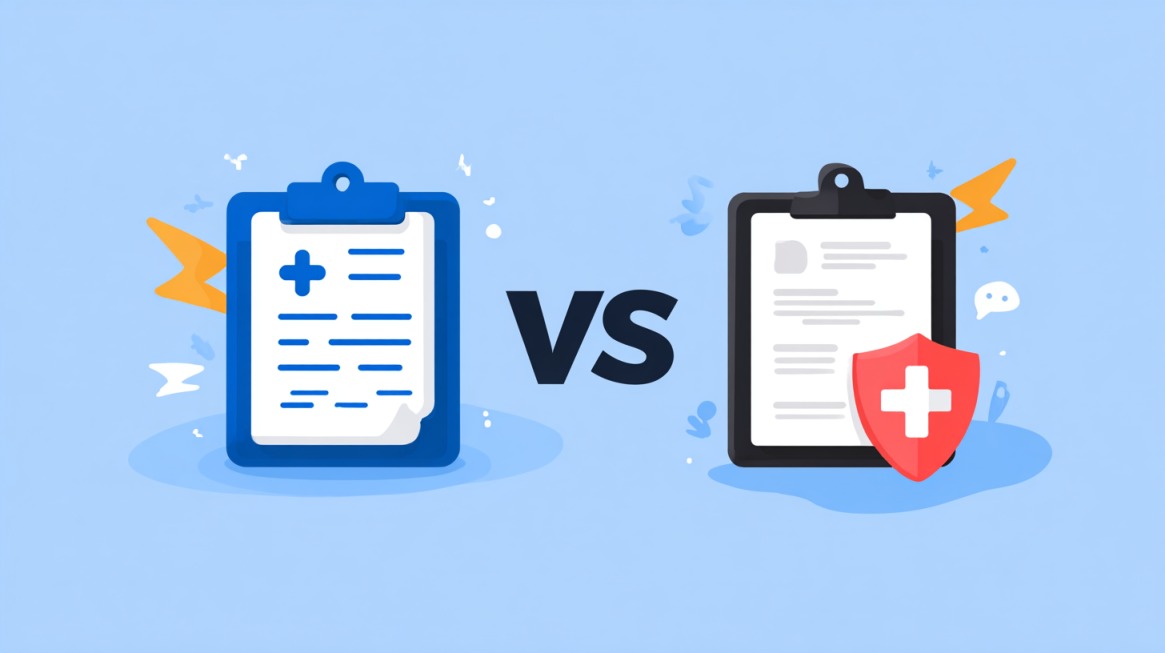Insurance isn’t just paperwork; it’s protection for the things that matter most. Your health, your family, your home, your peace of mind. With so many options out there, it’s easy to feel overwhelmed. But getting the right coverage doesn’t have to be complicated.
Here we break down strategies to help you choose coverage that fits your life, without any fake health hacks or paying for what you don’t need.
Why the Right Coverage Matters
Securing proper insurance coverage means you’re not just buying a policy, you’re buying peace of mind.
- Your medical bills are covered in a crisis.
- Your family stays financially stable if you’re no longer around.
- Your assets (like your home and car) are protected.
- You’re not caught off guard by hidden exclusions or limits.
Step-by-Step Strategies to Secure the Right Insurance Coverage

Getting insurance isn’t something most people look forward to, but it’s one of those things that really matters when life takes an unexpected turn. The key isn’t just finding any policy, but finding one that fits your actual needs without wasting money on things you’ll never use.
The steps below are designed to help you sort through your options, ask the right questions, and land coverage that makes sense for your life, simple, solid, stress and anxiety free.
1. Assess Your Needs
Before shopping for insurance, it’s important to evaluate what you truly need.
Key Considerations:
- Family Size: More dependents typically mean more extensive coverage.
- Income & Assets: Higher income and property value may require increased liability limits.
- Lifestyle Factors: Frequent travel, risky jobs, or pre-existing conditions can influence choices.
| Type of Need | Ideal Coverage To Consider |
|---|---|
| Single Adult | Basic health, renters, life (optional) |
| Family with Children | Life, health, auto, home |
| Retired Individuals | Medicare supplement, life, home |
| High-income Earners | Umbrella, premium life, property |
2. Compare Providers & Policies Side by Side

Don’t settle for the first quote, comparison is key to finding the right balance of cost and benefits.
Use Comparison Sites That Offer:
- User reviews and satisfaction scores
- Policy breakdowns (e.g., premiums vs. deductibles)
- Side-by-side benefit charts
What to Look For:
- Financial strength of the insurer (A.M. Best, Fitch)
- Customer service ratings
- Network size (especially for health insurance)
- Claim turnaround time
3. Understand Policy Terms Before You Sign
Insurance jargon can be confusing, but understanding it is vital to avoid future surprises.
Must-Know Terms:
- Premium – What you pay monthly/yearly
- Deductible – What you pay out-of-pocket before coverage kicks in
- Co-pay/Coinsurance – The shared cost after deductible
- Exclusions – What’s not covered
“Never skip the fine print. The difference between being covered and being denied is often buried in exclusions and waiting periods.”
4. Customize Policies to Fit Your Family’s Needs

Standard insurance plans don’t always cover what really matters to you. That’s why it’s worth taking the time to adjust your policy, things like add-ons or riders can make a big difference in how well it fits your day-to-day life.
If you’re considering private health insurance, it can give you quicker access to care, more choice in doctors and specialists, and often better coverage for treatments that might not be included in public plans. It’s a smart option for people who are self-employed, raising a family, or just want more control over how their healthcare works.
Before signing up, look closely at what the plan covers, including the premiums, out-of-pocket limits, what’s excluded, and which providers are in the network. The goal is to find something that fits both your health needs and your budget.
Popular Customizations:
- Maternity or fertility care (health)
- Riders for chronic illness (life)
- Natural disaster coverage (home)
- Roadside assistance (auto)
5. Don’t Just Focus on the Cheapest Option
Cheap insurance can be a trap. It’s better to pay a little more for coverage that actually protects you.
Think Long-Term Value:
- Does the policy offer cash value or dividends? (for life insurance)
- Will you pay more out of pocket during emergencies?
- Are there loyalty or renewal benefits?
6. Reassess Coverage Annually

Your insurance needs aren’t set in stone. As life changes, so should your policies. An annual review helps ensure you’re not underinsured, overpaying, or missing out on new coverage options.
| Life Event | Time to Review Coverage? |
|---|---|
| Marriage or Divorce | ✅ Yes |
| Having a Child | ✅ Yes |
| Buying a Home or Car | ✅ Yes |
| Retirement | ✅ Yes |
| Changing Jobs or Income | ✅ Yes |
7. Work With a Licensed Insurance Broker
Insurance brokers are more than just middlemen, they’re your personal advisors in a complex industry. Because they work with multiple insurers, they can help you find the best policy for your needs and budget without bias.
Benefits of Brokers:
- Provide quotes from multiple companies
- Offer advice tailored to your risk profile
- Help with claim filing and disputes
Common Mistakes to Avoid

Even with the best intentions, it’s easy to make costly missteps when choosing insurance. Many people focus only on price, overlook the fine print, or stick with outdated policies. These oversights can lead to serious gaps in coverage when you need support the most.
| Mistake | Why It’s a Problem |
|---|---|
| Choosing lowest premium only | May lead to high deductibles or gaps |
| Not reading policy exclusions | Could result in denied claims |
| Forgetting to update beneficiaries | Could delay or misdirect payouts |
| Ignoring employer-sponsored plans | Often offer better group rates |
FAQs
Final Words
Good insurance should feel like a safety net, not a guessing game. When you understand your needs and review your options with care, you’re far more likely to get coverage that actually supports you.
The goal isn’t just to tick a box, it’s to protect your future with confidence.

